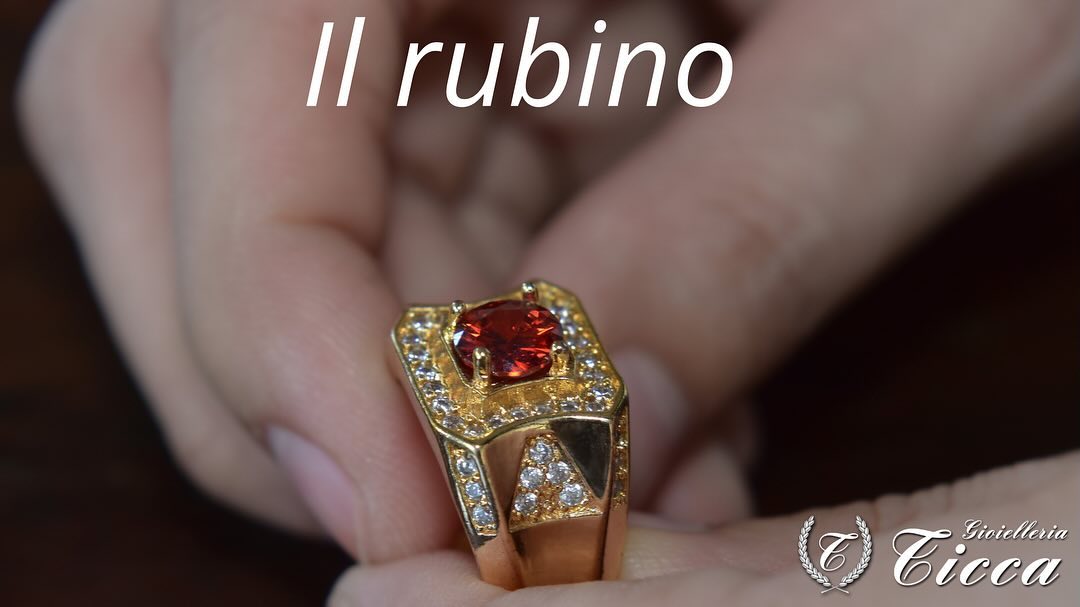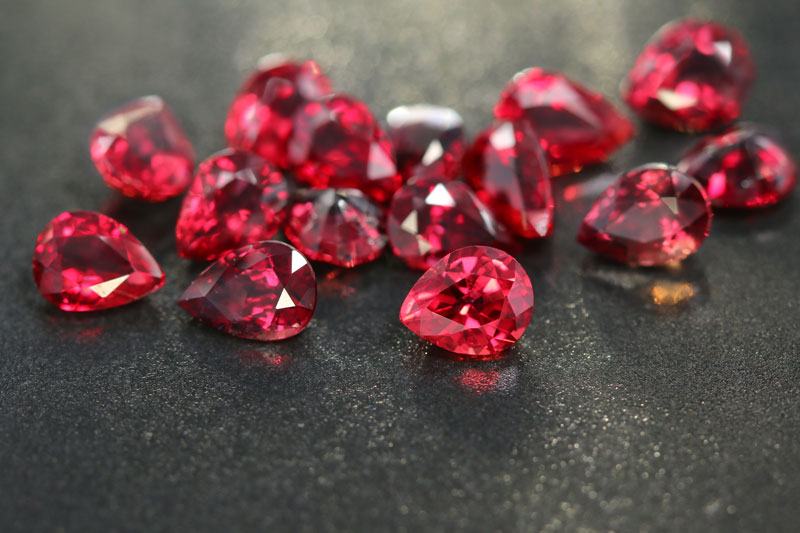
The ruby
Ruby is a variety of the mineral cornundum and owes its color mainly to the presence of traces of chromium. The mineral corundum is an aluminum oxide. In addition to ruby, the mineral corundum can have many other colors, for example blue (sapphire) and orange-pink (padparadscia).
Like all gems, ruby also has physical and internal characteristics. Its main physical characteristic is that it is not a particularly fragile gem and given its high melting point it does not create problems during jewelery processing. It is quite resistant to abrasion and acquires a good shine if processed and cleaned properly. However, from the point of view of internal characteristics, the most important is transparency: the ruby should appear perfectly transparent and have no inclusions visible to the naked eye. With the appropriate instruments it is almost always possible to detect the presence of inclusions. Rubies without internal characteristics are unobtainable and not necessarily considered valuable.
Treatments
The rubies on the market are divided into various categories depending on their beauty, origin and the treatments they have undergone. Among the most common we have HEATING. This beautiful gem can improve when heated to high temperatures. Obviously this treatment diminishes its value.
There are also other, even more invasive treatments. One of these is THERMO DIFFUSION, a process with which it is possible to alter the color of the most superficial portion of the gem.
Yet there is an even more invasive treatment, and that is filling fractures with glass and lead.
But what makes ruby so special?
Certainly its intense red color which, depending on the case, can have hints of purple or orange. However, its pure red color is the most appreciated.
Among all the possible shades of red for rubies, the most appreciated is the so-called "pigeon blood" red, typical of Burmese rubies. Rubies often appear to "light up" in direct sunlight, as they react to ultraviolet radiation. Using a UV lamp you can then notice the wonderful fluorescence of the gem in question, although not all rubies react to radiation.
Geographical origin
Rubies from the Mogok region (Burma) are very well known and renowned. Several ruby deposits are also found in Thailand, Vietnam and East Africa etc. from which good colored gems are extracted. Many of the natural and treated rubies from around the world are traded in Thailand.
It is very important to point out that the geographical origin of a gem is not synonymous with quality. Wonderful gems and others of low quality can be extracted from a deposit. It is known, for example, that rubies mined in Vietnam are sometimes smuggled into Myanmar and sold as Burmese gems to increase their value.







